
2023 Summer Reading List
We love a good book list, especially when it comes time to soak up the longer, sunnier days of summer! Getting children involved in this tradition at a young age can be a fun way to continue their early language development. That’s why Sarah Simpson, family education and literacy specialist at the A. Sophie Rogers School for Early Learning, picked her top 10 books for young children that celebrate the joys of summer. These titles celebrate diverse characters and summertime experiences while offering great, educator-approved ways to help build your child’s early literacy skills.
By Sarah Simpson, family education and literacy specialist at the Schoenbaum Family Center
Download a quick look at the full book list here.

#1: Ice Cream Face
by Heidi Woodward Sheffield
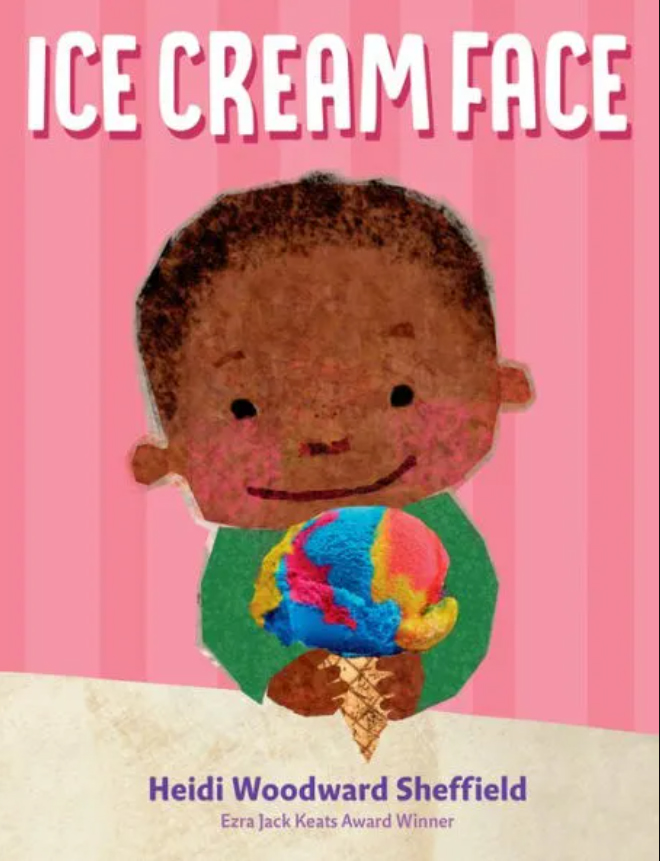
Recommended ages: Pre-K (ages 3-5)
Description: What is summer without some delicious – and drippy – ice cream? A young boy is doing his very best to keep his cool while waiting in a very long ice cream line. Others are also waiting and their faces tell a tale – the nose-licker, the dribbler, the biter, and the bearded baby to name a few – but his face looks gloomier the longer he is in line. Fortunately, his face quickly melts into a smile when he bites into a colorful scoop. Will he be able to overcome this tricky treat’s pitfalls – the brain freeze, the drip-drop melting, and most tragic of all, the scoop plopping on the ground?
Why we like it: The author uses simple language and poetic descriptions to talk about the experience of eating ice cream and the emotions associated with it. Wanting, waiting, and disappointment can be some of the most challenging emotions for preschool children to understand and manage. This book explores those emotions within a very relatable context and provides wonderful social and emotional learning opportunities. It is also full of onomatopoeias and dialogic reading prompts.
An onomatopoeia is a word that exactly describes a sound. These are very common in children’s books and graphic novels. Examples include bonk, bam, tick tock, and oink. Playing with onomatopoeic words can help your child to appreciate the sounds of language.
Dialogic reading is when adults and children talk about what they are reading together. These conversations are a great opportunity to grow your child’s literacy, conversation, and thinking skills in an engaging, fun, and natural way. Learn more here.

#2: How to Say Hello to a Worm: A First Guide to Outside
by Kari Percival
Recommended ages: Pre-K (ages 3-5)
Description: The joys of garden planting and tending are many for budding horticulturists. From pushing in the seeds to greeting the creepy crawlies who help the garden grow, there are many opportunities to learn and play. The little ones in this story gently care for seedlings and marvel at the newly appearing plants. They observe the ways plants grow and propagate and get to say hello to the many creepy crawlies and critters of spring and summer.
Why we like it: The refrain of this title, “Say hello to…” is a repetitive phrase that both encourages engagement and also language development and acquisition. The author describes a multi-sensory exploration of growing a garden peppered with questions directed towards the reader, making this an interactive and engaging read aloud.
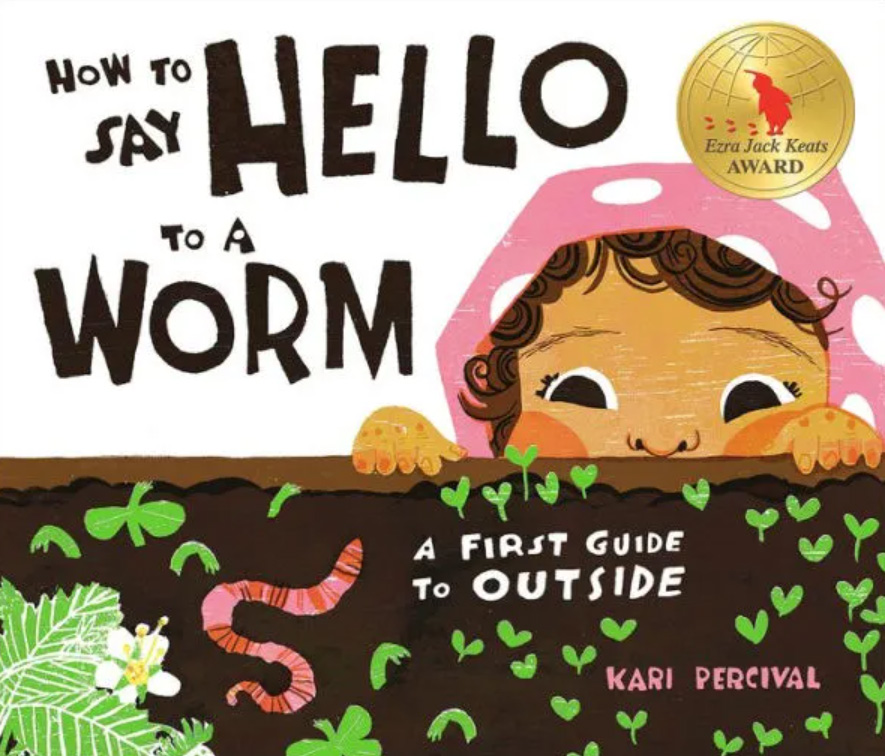

#3: Stroller Coaster
by Raúl the Third
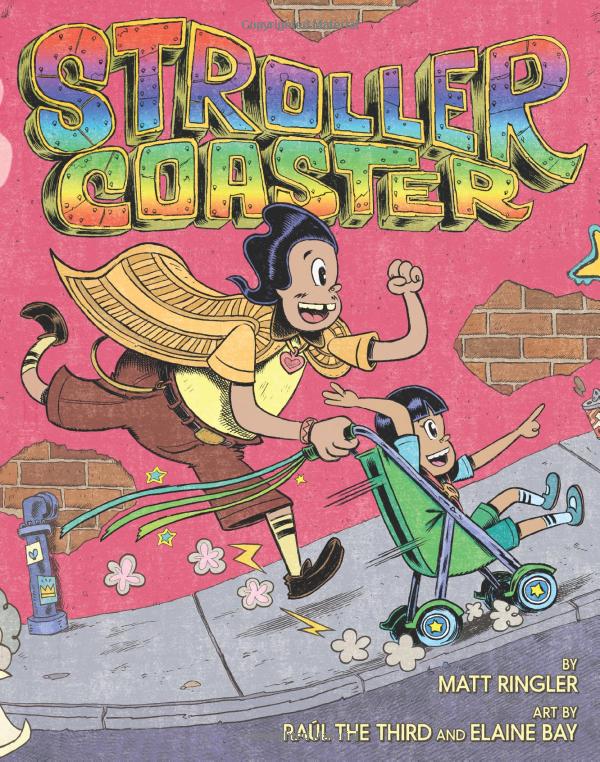
Recommended ages: Pre-K (ages 3-5)
Description: A young Latina girl named Sam is bored. Luckily, her dad knows the perfect antidote – a ride on the Stroller Coaster. In she is strapped, and her and her dad head out into the bustling city to take in the sights and sounds of the local Spanish shops, the basketball courts, and the local park. After grabbing a paleta and heading through a tunnel, it is time for the Stroller Coaster to come to a stop. Sam and her dad then cuddle in for an afternoon nap to recover from the excitement.
Why we like it: With the richness of the vocabulary and the author’s dynamic use of bold, graphic fonts, this title is full of print awareness moments. The text is equally important to the illustrations as it is to depicting the narrative. Sounds, colors, body parts, and feelings are all discussed throughout the story giving educators, librarians, and families ample opportunities for dialogic reading and concept reinforcement.
Dialogic reading is when adults and children talk about what they are reading together. These conversations are a great opportunity to grow your child’s literacy, conversation, and thinking skills in an engaging, fun, and natural way. Learn more here.

#4: Jump In
by Shadra Strickland
Recommended ages: Infant and toddler (0-3) and Pre-K (ages 3-5)
Description: A childhood game of Double Dutch gets a group of children (and some grown-ups) in the community playing together in the sizzling summer heat. From the Delancy Twins and Leroy Jones to Ms. Mabel and the Reverend, they are all called by the Double Dutchers to, “Jump in!” The game goes from sunup to sunset, but as the streetlights flicker on, mamas shout, “It’s time to jump out!”
Why we like it: The rhythm of the ropes hitting the sidewalk at an even pace is reflected brilliantly in Strickland’s description: “Tic tac, tic tac through the wind. Feet bounce up the block in time… jump in!” With many Tier Two vocabulary words throughout couched by the refrain of “jump in,” this title will bolster vocabulary development and reader engagement.
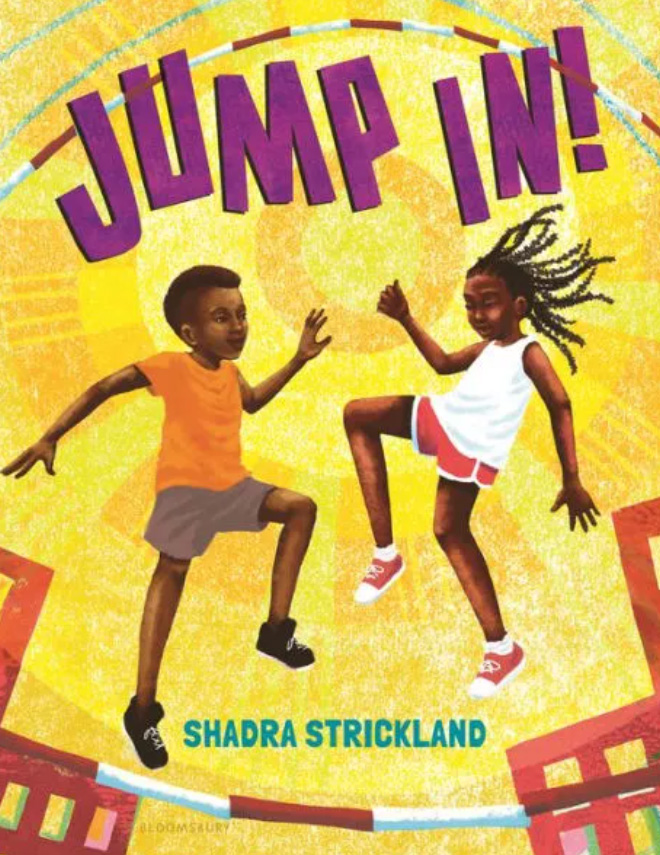
Tier Two words are lower-frequency words that occur across various disciplines (e.g., science, arts). Examples of Tier Two words include imagine, concentrate, fortunate, opportunity, and the like. As you read with your child, you’ll come across some Tier Two words in the book. It is useful to pause and discuss these words to build your child’s expanding vocabulary.

#5: Pool Party
by Amy Duchene
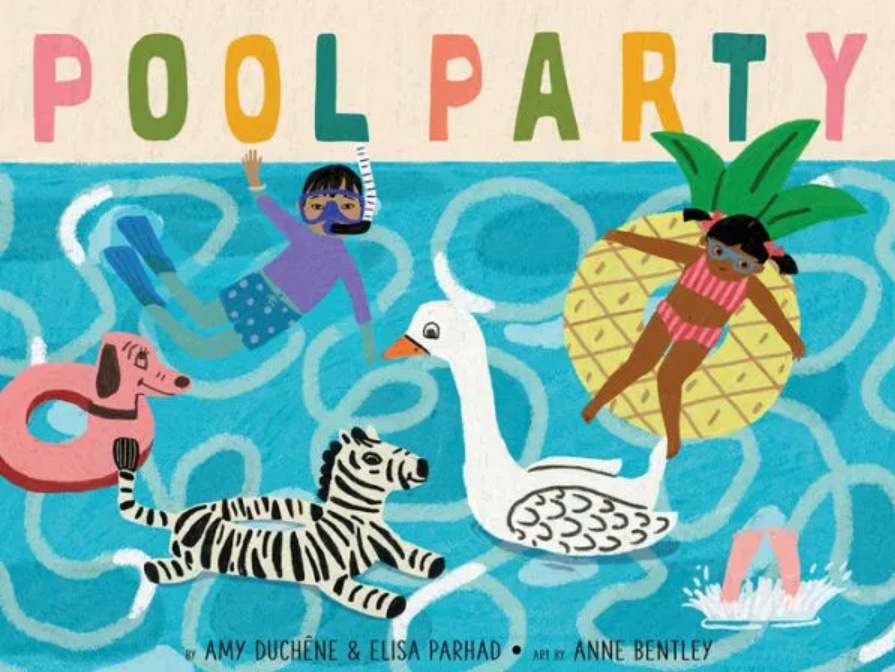
Recommended ages: Infant and toddler (ages 0-3)
Description: A hot summer day is best spent swimming at the public pool for the children in this book. Whether they jump, belly-flop, or dive in, each child is eager to cool down in the shimmering, clear blue water. Told in brief rhyming verse, all the joys of poolside merriment are featured in this title – underwater games, pruned hands, cool snacks, and, above all, lots of fun with friends.
Why we like it: The use of descriptive language and Tier Two vocabulary words – plunge, pruned, marooned – as well as the narrative’s rhyming structure, provide many emergent literacy skill-building opportunities throughout the text. Rhyming encourages children to segment words into phonemes which supports their ability to decode and comprehend language.
Tier Two words are lower-frequency words that occur across various disciplines (e.g., science, arts). Examples of Tier Two words include imagine, concentrate, fortunate, opportunity, and the like. As you read with your child, you’ll come across some Tier Two words in the book. It is useful to pause and discuss these words to build your child’s expanding vocabulary.
Phonemes are the smallest units of sounds in English. For instance, the word cot comprises three phonemes (/k/ /o/ /t/) as does the word caught (these are homophones – words that sound alike). Note that phonemes are different than letters. Helping your child pay attention to the sounds of words that you hear in books can build phonological awareness (e.g., The boy lost his teddy…. Boy starts with the sound /b/).

#6: Firefly Home
by Jane Clarke
Recommended ages: Pre-K (ages 3-5)
Description: Poor Florence the firefly is lost, and it is up to the encouragement and guidance of the readers to help wayward Florence find home in this interactive tale. The luminescence of the moon, a lighthouse, a train, and the city threaten to lure Florence off course. Luckily, Florence does not shy away from asking for the reader’s assistance in navigating her homewards.
Why we like it: Part of an interactive Neon Picture Books series by Jane Clarke and Brita Teckentrup, this title works hard to engage the audience verbally and physically. From making predictions about what the mysterious light sources are to identifying the emotions Florence feels throughout her journey, Firefly Home has many prompts to serve and return with young readers.
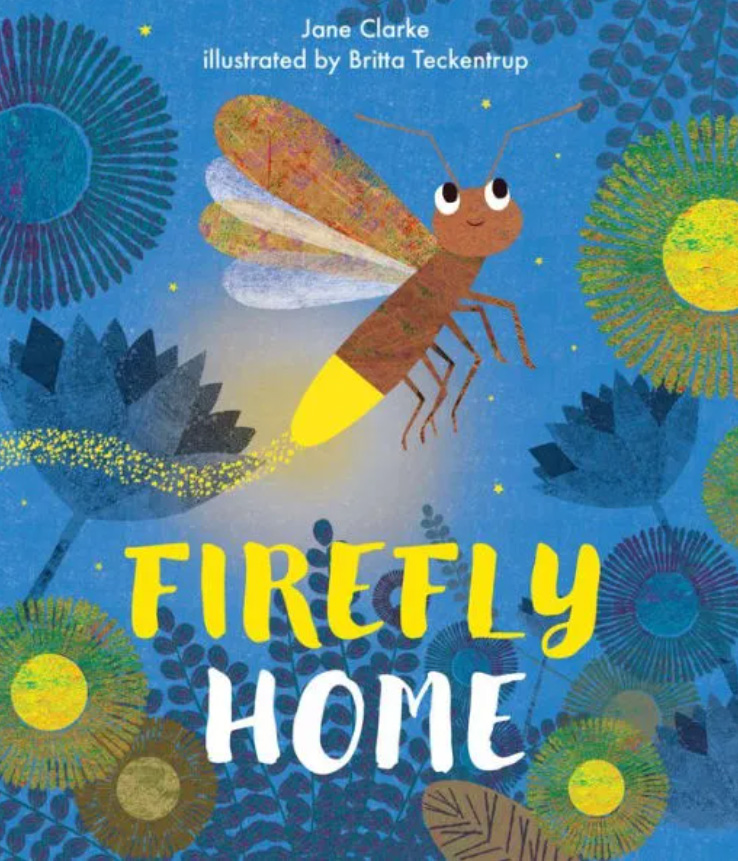

#7: Every Little Letter
by Deborah Underwood
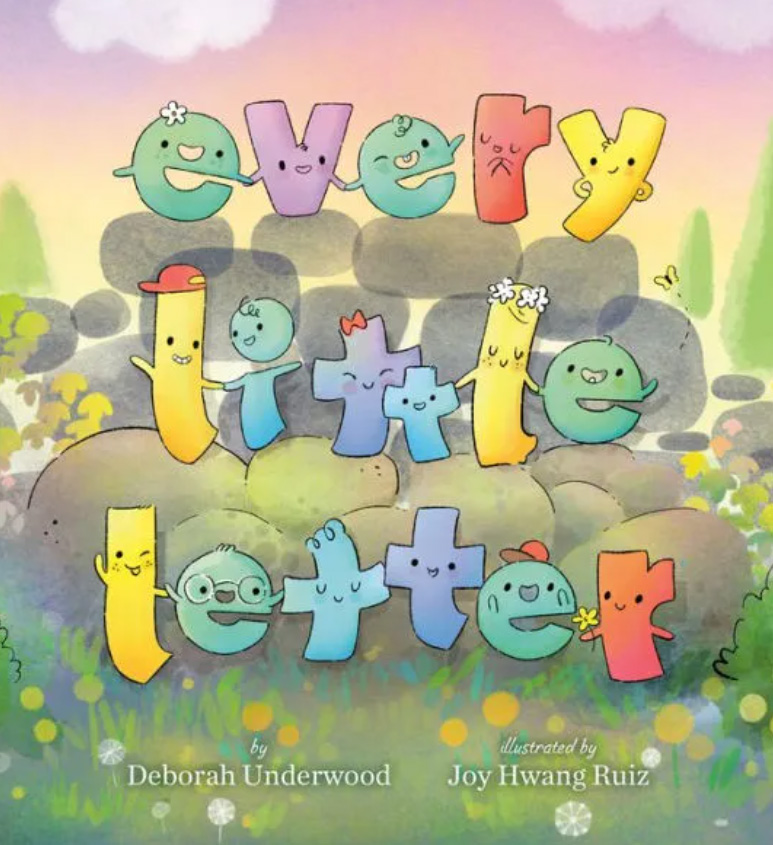
Recommended ages: Pre-K (ages 3-5)
Description: On a bright and sunny summer day, little “h” is curious about what is beyond the confines of her town’s steep stone walls. Yet upon finding a small hole in the wall, little “h” meets little “i” and together they make “hi.” Much to the dismay of the big letters, the little letters start communicating via paper airplane letters sent beyond the towns’ borders. And soon the power of making words breaks down the barriers – physical and emotional – separating the two towns.
Why we like it: Letter recognition opportunities abound in this title, as every character is a humanized letter. There are several contexts in which this book plays on the functions of letters, not only as the building blocks of words but as sounds. The engaging narrative and adorable illustrations will entice any preschooler to build their letter knowledge and phonemic awareness.
Phonemes are the smallest units of sounds in English. For instance, the word cot comprises three phonemes (/k/ /o/ /t/) as does the word caught (these are homophones – words that sound alike). Note that phonemes are different than letters. Helping your child pay attention to the sounds of words that you hear in books can build phonological awareness (e.g., The boy lost his teddy…. Boy starts with the sound /b/).

#8: Tangled
by Anne Miranda
Recommended ages: Pre-K (ages 3-5)
Description: A variety of simple and complex shapes get entwined with each other on a playground geometric dome. A crisis is thwarted when Line shows up with a clever solution to detangle the shapes from one another.
Why we like it: Math literacy and shape knowledge play an important part in letter recognition because most letters contain shapes in their upper- and lower-case forms. Beyond building math skills, this book also features rhyming text and font breakouts that lend themselves to preschool print awareness.
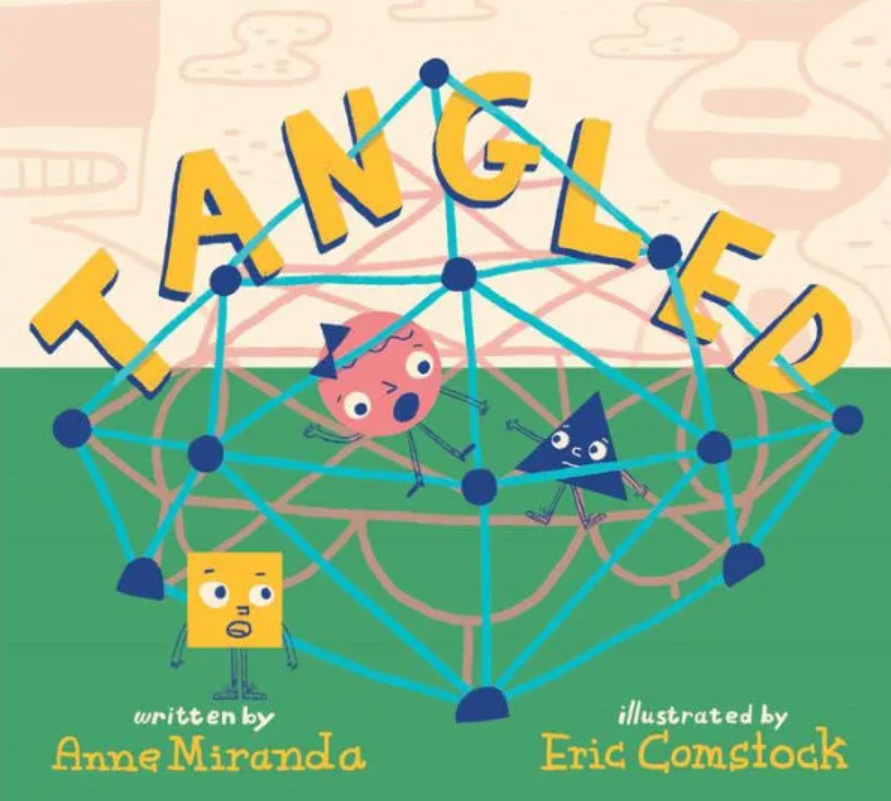

#9: Leo at the Park
by Anna McQuinn

Recommended ages: Infant and toddler (0-2)
Description: Toddler Leo is on his latest adventure – a playdate trip to the park. At the park, Leo meets his friend Yu and they delight in the summer wonders of the splashpad, have a picnic, and fly on the playground swings. After their shaded picnic, Leo and mom head home as the sun is setting.
Why we like it: Told in short, action-laden sentences, this summer story is perfect for infants and toddlers. The repetition of words – splash, splash, splash, and nom, nom, nom – coupled with bright, joyful illustrations are sure to engage the wiggliest of pint-sized readers.

#10: We All Play
by Julie Flett
Recommended ages: Infant and toddler (0-2)
Description: This joyful romp highlights the playful behaviors of animals punctuated with scenes of children at play. The book’s refrain, “We play, too,” is translated into Cree “kimêtawânaw mîna” in the partially bilingual text. With simple alliteration – animals hide and hop and sniff and sneak and peek and peep – the author introduces the reader to North American animals of land and sea in stark, but impactful illustration.
Why we like it: Despite being simple in premise and execution, the repetition of the phrase, “We play, too,” invites young readers to say the refrain with their caregiver. The author signals the use of this phrase to emergent readers by always pairing it with scenes featuring the playing children. The rich vocabulary and alliteration add to this book’s phonemic awareness.
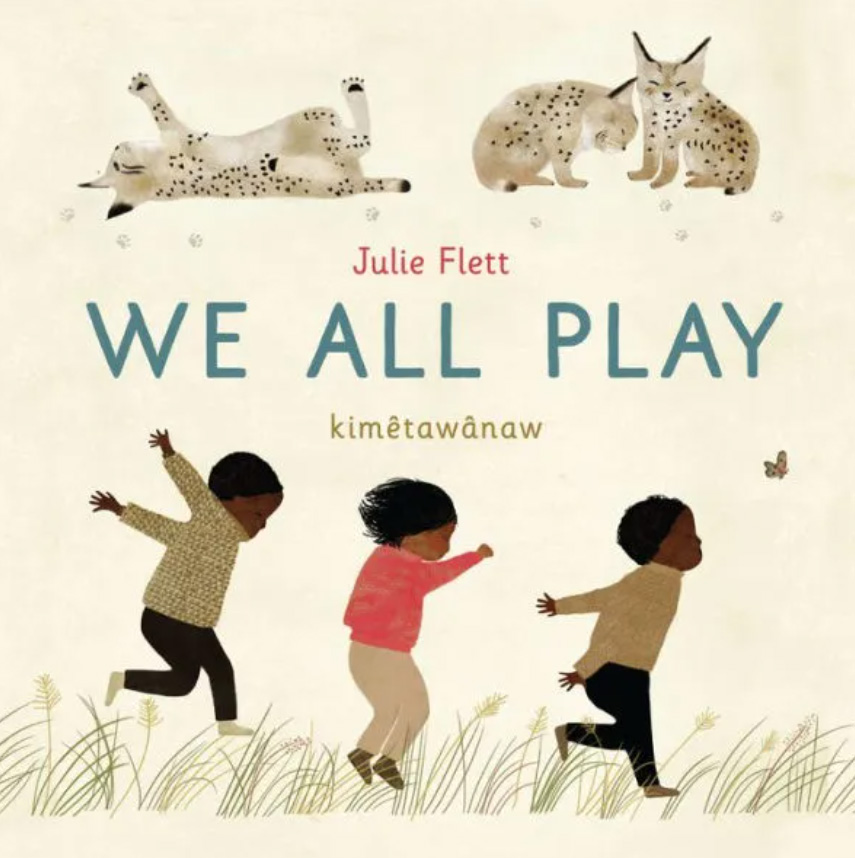
Cree are Indigenous people from North America and one of Canada’s largest First Nations.
Phonemes are the smallest units of sounds in English. For instance, the word cot comprises three phonemes (/k/ /o/ /t/) as does the word caught (these are homophones – words that sound alike). Note that phonemes are different than letters. Helping your child pay attention to the sounds of words that you hear in books can build phonological awareness (e.g., The boy lost his teddy…. Boy starts with the sound /b/).

